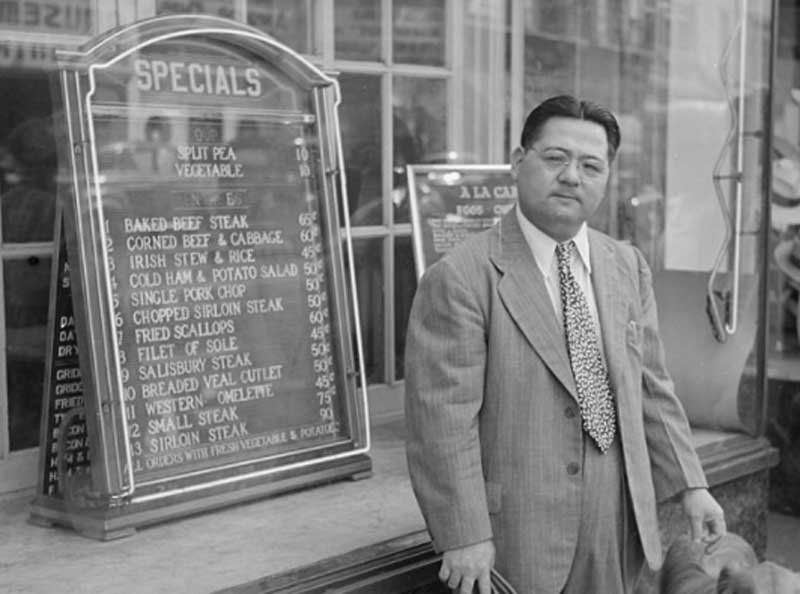
By Jeff Burton and Mary M. Farrell
July 4, 2021
Seventy-eight years ago, James Hatsuaki Wakasa was shot and killed while walking his dog in the Utah desert. In a finding that would sound all too familiar to today’s Black Lives Matter protesters, an official inquiry determined that the killing was a “justifiable military action.” Mr. Wakasa’s fellow incarcerees at the World War II Topaz Relocation Center may not have agreed: a memorial was erected to Mr. Wakasa near where he was killed. The military and the Topaz administration quickly ordered the monument destroyed. If, as they claimed, the killing of an innocent man walking his dog was justified, it was “most inappropriate that a monument be erected to him.”
When Nancy Ukai, director of the “50 Objects/50 Stories” project, shared with us a map she had found in the National Archives that documented the precise location of the 1943 killing, we authors traveled the 500 miles from our home to Topaz to learn if any traces of the monument remained.

This series describes our quest and its results.
In the fall of 2020, wildfires were raging across California and smoke in our hometown of Lone Pine, near Manzanar, made it hard to breathe. With new information in hand, we planned a short escape, our first journey after nine months of surgeries and chemotherapy. We drove through Nevada across beautiful, stark landscapes to see if we could perhaps find a few bits of concrete, a memory left at the Topaz incarceration camp.
We had visited Topaz several times before and had seen and photographed the Wakasa memorial tree documented by Ellis. On this visit, we paid our respects to the known monuments. The carved tree has nearly fallen over. A sign about the killing, present at the pump station in 2004 and as late as 2012, is gone, but there is a new sign along the security fence, visible from the road, that reads: “In Memory of / James Hatsuki Wakasa / Shot and Killed” [1], which was erected in 2015. [2]

The Topaz Museum Board hired a local business to make signs to replace all the worn markers throughout the site. They then hired students from the White River Academy in Delta to install the signs. Since the Wakasa sign was not a replacement for an existing sign, the students estimated where it should be installed.
This time, armed with the map found by Nancy Ukai, we searched for remnants of the 1943 monument of stone and concrete that had been ordered destroyed and removed. The map was drawn by George Shimamoto, a member of the internal police, the day after the shooting. It shows the spot where Wakasa was killed and includes measurements: 943½ feet from Guard Tower #8 (labeled watch tower #8 on the sketch map), 64 inches from the security fence, and 406½ feet from a flood-light pole.

To relocate the spot indicated on Shimamoto’s map, first we found the approximate former location of Guard Tower #8, where the Military Police sentry was when he shot and killed Mr. Wakasa. Historic records indicate the guard tower was in the southwest corner of the camp, just northeast of the intersection of roads 3500 North and 11000 West. We had recorded the pulled concrete footings of the guard tower at that location in 1995. The footings are still there, unmoved, as is a guy-wire anchor that would have been used to stabilize a power pole that brought electricity and a phone line to the tower.
From the guard-tower location, we used a 300-foot-long measuring tape to count out 943½ feet toward the north, along the security fence. For most of this distance, there is only sparse, low greasewood growing in the silty and often alkaline soil. We moved slowly, keen to spot any fragment of concrete, any small rock, that might have been scattered when the monument was dismantled, or any artifact that may have been left as a memento or memorial.

to be continued
Notes:
1. The sign uses the Smithsonian website spelling, following the caption written by Obata in his sumi ink painting of the incident.
2. Nancy Ukai, Amache Dog Carving: Pets Behind Barbed Wire. 50 Objects/Stories: The American Japanese Incarceration. [50objects.org]
Jeff Burton is Cultural Resource Program Manager at Manzanar National Historic Site, California.
Mary Farrell is director of Trans-Sierran Archaeological Research (Lone Pine, CA) and a senior archaeologist for TEAM Engineering and Management (Bishop, CA).
Discover Nikkei is published online by the Japanese American National Museum, Los Angeles (discovernikkei.org).
Editor’s note. The Letter to the Editor (p. 2), which led the NAP to reprint this DN article, raises the question, “To what extent should the NAP cover national Japanese American news?” We elected to cover the Wakasa Monument because it is a current JA discussion topic. As our coverage is necessarily limited, we encourage interested readers to read further, starting with the five-part DN series (June – July 2021). After that, online articles in “Nichi Bei” (Chizu Omori’s “Rabbit Wanderings” column, Aug. 19; the Friends of Topaz letter to the editor, Sep. 2) and in “Rafu Shimpo” (Sep. 11) bring one up to date.
The Topaz camp is presently a National Historic Landmark, which is a lesser designation than National Historic Site, such as Minidoka and Manzanar.



